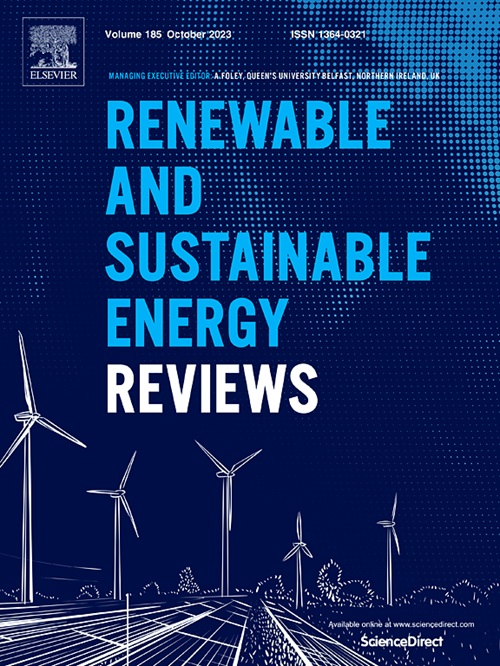流动沸腾传热:理论、新方法和新应用综述
IF 16.3
1区 工程技术
Q1 ENERGY & FUELS
引用次数: 0
摘要
流动沸腾传热具有传热系数高的优点,在工业应用中得到了广泛的应用,对设备的能效有很大的影响,尤其适用于热流密度极高的场合。流动沸腾的传热机理可分为成核沸腾和对流沸腾。由于其复杂的机理和广泛的工业应用,两相沸腾之间的传热一直是一个热点和难点问题。本文综述了流动沸腾传热从经典理论到新方法和工业应用的研究进展。本文介绍了流动沸腾换热的机理,特别是对有核沸腾和对流沸腾的认识。总结了具有代表性的相关性及其应用范围以及机器学习方法的最新进展。最后,讨论了新兴的工业应用,包括航空航天的蒸腾冷却、卫星的热管冷却、数据中心的冷却、服务器和电池的浸入式冷却。未来流动沸腾换热研究将向跨尺度、高热流密度、高温等极端换热环境发展。本文可以帮助读者对流动沸腾的研究现状、前景和先进应用有一个大致的了解。本文章由计算机程序翻译,如有差异,请以英文原文为准。
A review of flow boiling heat transfer: Theories, new methods and emerging applications
Flow boiling heat transfer has the advantage of high heat transfer coefficient, and it has been widely used in industrial applications and has great effect on the energy efficiency of equipment, especially for the situation under extremely high heat flux. The heat transfer mechanism of flow boiling can be divided into nucleate boiling and convective boiling. Because of its complicated mechanism and wide use in industrial applications, the heat transfer between two-phase boiling has become a hot and difficult problem so far. This paper presents a review of flow boiling heat transfer, from classic theories to new methods and industrial applications. This paper introduces the mechanisms of flow boiling heat transfer, especially the understanding of nucleate and convective boiling among studies. Moreover, representative correlations and their application range as well as the recent development of machine learning methods are summarized. Finally, the emerging industrial applications are discussed, including transpiration cooling in aerospace, heat pipes in satellite, data center cooling, immersion cooling for severs and batteries. Future research on flow boiling heat transfer will develop towards extreme heat transfer environments such as cross scale, high heat flux, and high temperature. This paper can help readers obtain a general understanding of the current research, prospects and advanced applications on flow boiling.
求助全文
通过发布文献求助,成功后即可免费获取论文全文。
去求助
来源期刊

Renewable and Sustainable Energy Reviews
工程技术-能源与燃料
CiteScore
31.20
自引率
5.70%
发文量
1055
审稿时长
62 days
期刊介绍:
The mission of Renewable and Sustainable Energy Reviews is to disseminate the most compelling and pertinent critical insights in renewable and sustainable energy, fostering collaboration among the research community, private sector, and policy and decision makers. The journal aims to exchange challenges, solutions, innovative concepts, and technologies, contributing to sustainable development, the transition to a low-carbon future, and the attainment of emissions targets outlined by the United Nations Framework Convention on Climate Change.
Renewable and Sustainable Energy Reviews publishes a diverse range of content, including review papers, original research, case studies, and analyses of new technologies, all featuring a substantial review component such as critique, comparison, or analysis. Introducing a distinctive paper type, Expert Insights, the journal presents commissioned mini-reviews authored by field leaders, addressing topics of significant interest. Case studies undergo consideration only if they showcase the work's applicability to other regions or contribute valuable insights to the broader field of renewable and sustainable energy. Notably, a bibliographic or literature review lacking critical analysis is deemed unsuitable for publication.
 求助内容:
求助内容: 应助结果提醒方式:
应助结果提醒方式:


